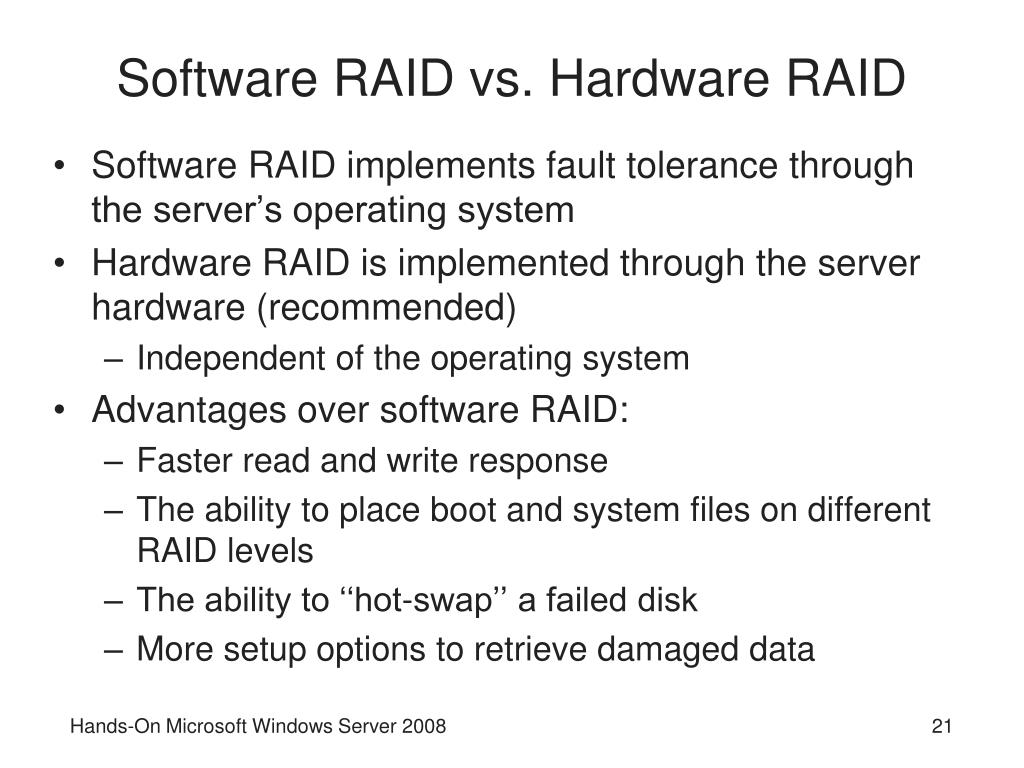
Problem points in HW RAID implementation for NVMe While it has some of the familiar useful features of SAS RAID cards, it largely struggles with the performance of several NVMe drives and has a potential for being a bottleneck. Out of the 3 major HW RAID manufacturers, only one has come up with NVMe RAID implementation. It means that the host sees RAID volumes as physical drives, which reduces OS management overhead and makes HW RAID compatible with almost all operating systems.įor NVMe currently there’s limited availability of HW RAID options. All configuration is stored on the card and drive management is available from the adapter BIOS, before booting into host OS. Like the HDDs, a portion of on-board RAM can be allocated to serve as a buffer to increase write performance, and a battery back-up unit (BBU) can be added to the adapter to protect cached data in case of an EPO event. HW RAID adapters can add write-back caching without the risk to data. Due to the risk of data loss, in most environments write-back caching is disabled on the HDDs. In case of an emergency power-off (EPO) event, the contents of the volatile RAM cache are lost, which leads to potential data corruption or loss (there are new developments in this field, making use of NAND flash on the HDD to dump cache contents, but this is only relevant for the newest large-capacity HDDs). Using RAM to buffer writes notably increases drive performance at the cost of reliability. Most drives have a part of on-board RAM allocated to serve as write-back cache. Literally hundreds of SAS drives can be connected to a single adapter and used as part of RAID volumes. This gives a lot of flexibility and adds scale to the setup. SAS adapters come in assorted flavors, but most models are available with either internal ports to connect to the server backplane, external ports to connect to a SAS JBOD(s), or both. So, if you’re paying for connectivity anyway, it makes sense to offload RAID calculations there as well. Even those servers that have onboard SAS, rely on a discrete SAS chip. Unlike SATA, connectivity for SAS drives is not integrated into the chipset.


Yet another level of complexity appears when NVMe is connected via network. This is one of the reasons why RAID is not straightforward with NVMe. Bringing huge increases in throughput, these drives require a lot of computational power to calculate parity information and to rebuild in case of a drive failure. Today’s 20+ TB drives may take weeks to re-construct and the probability of losing another drive in a group during this stressful time is increasing.Īnother disruption to the status quo is NVMe. It happens due to the longer time it takes to rebuild data in case of a drive failure.

However, the storage industry is evolving fast, and new storage technologies carry a lot of challenges for RAID in 2023.Īs HDDs are getting bigger every year, the reliability of parity RAID goes down. RAID technology has been around for decades and is well-known when applied to traditional configurations with mid-capacity HDDs. This helps prevent a loss of data or application downtime in case of a drive failure. It can also be used to increase data reliability and availability by adding parity to the dataset and/or mirroring one set of drives onto another. RAID can be used to improve performance by taking advantage of several drives’ worth of throughput to access the dataset. RAID (redundant array of independent disks) is a technology that allows combining multiple disk drives into arrays or RAID volumes by spreading (striping) data across drives.


 0 kommentar(er)
0 kommentar(er)
